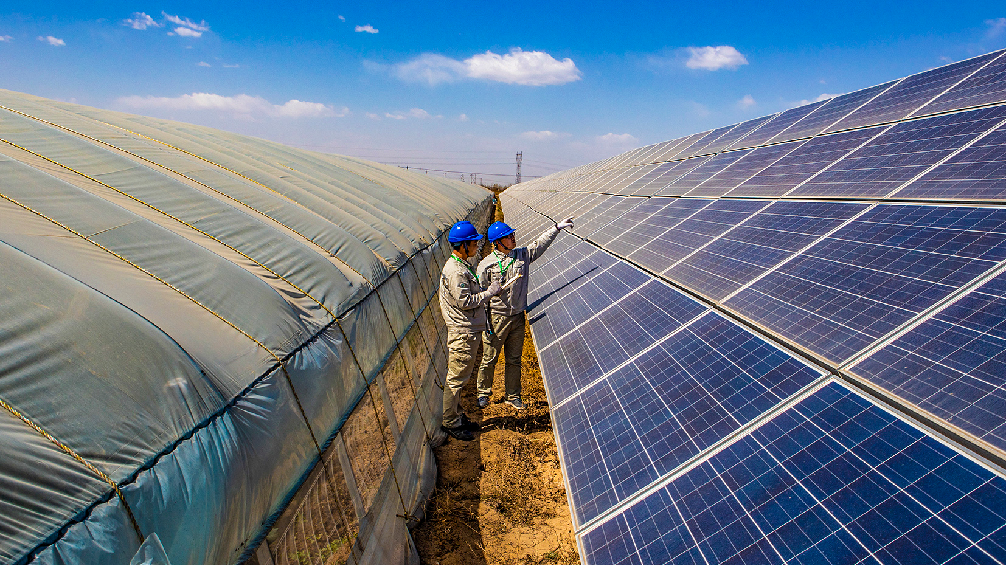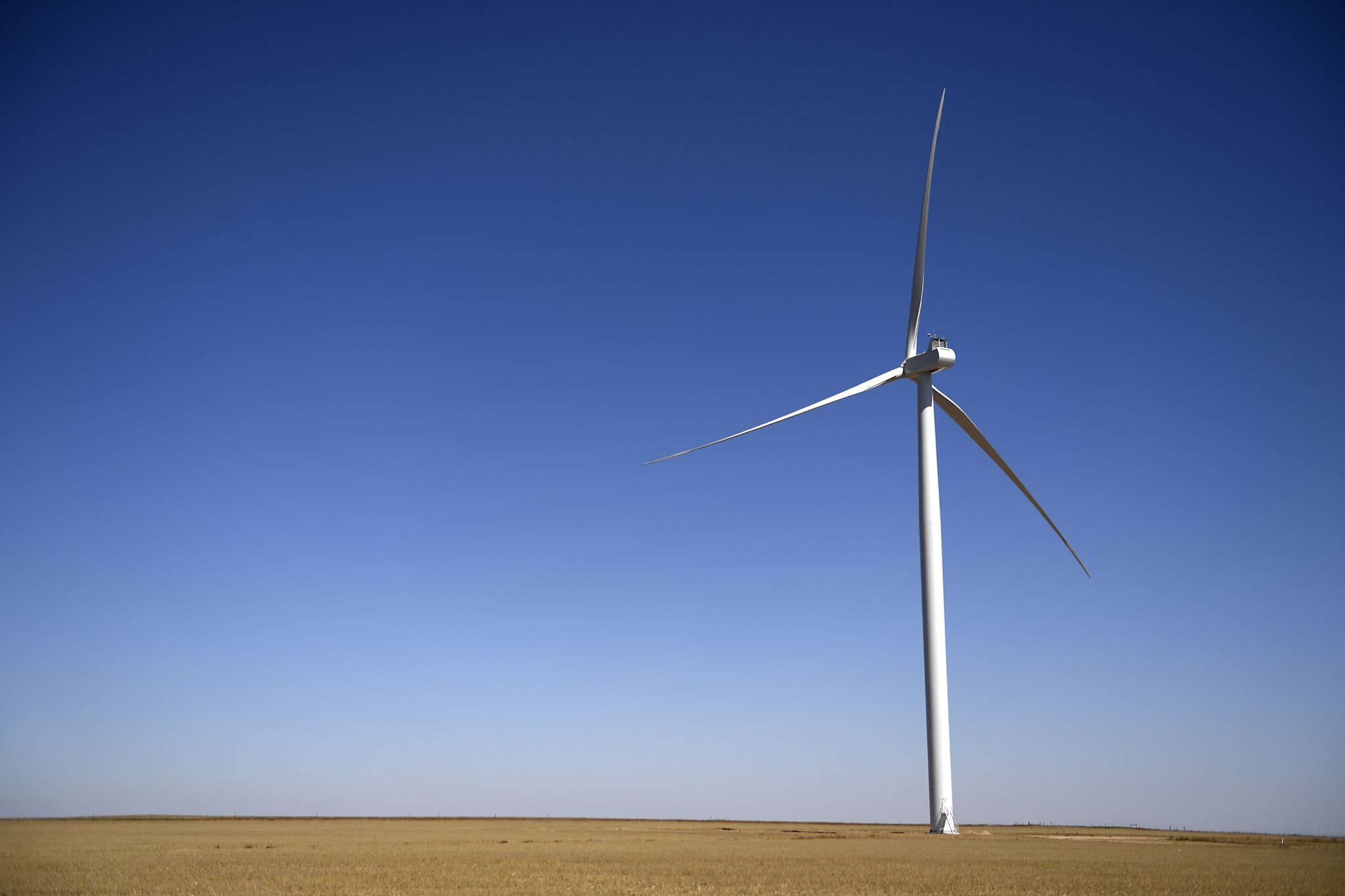
Checking the condition of photovoltaic (PV) solar panels at a PV station in Wuyi County, north China's Hebei Province, March 30, 2019. /Xinhua
Checking the condition of photovoltaic (PV) solar panels at a PV station in Wuyi County, north China's Hebei Province, March 30, 2019. /Xinhua
Editor's note: Hannan Hussain is a foreign affairs commentator and author. He is a Fulbright recipient at the University of Maryland (U.S.) and a former assistant researcher at the Islamabad Policy Research Institute. The article reflects the author's opinions, and not necessarily the views of CGTN.
Can Beijing and Washington cooperate on climate? Skeptics argue that a super competitive view of diplomatic ties will hamper headway on a partnership. Optimists contend that a precedent for cooperation is grounded in their shared commitments on global climate governance.
The answers fall somewhere in the middle. Both Beijing and Washington are pursuing complimentary approaches to carbon neutrality, clean power transitions, and public investments targets, with the broader intent to take impact global. Only a Sino-U.S. climate partnership can deliver on the latter outcome.
Carbon neutrality: soft economics
China and the U.S. are approaching long-term decarbonization goals through quantifiable economic levers. For China, its 14th Five-Year Plan (2021-2025) gives formal force to an 18% reduction in carbon circulation within the economy. More importantly, quantifying this reading is a broader 13.5% limit on aggregate energy use within the Chinese economy. This added metric helps capture transitions vis-à-vis carbon emissions within China, once manufacturing ramps up in the belly of 2021. Delivering on a 6% GDP growth rate this year could also determine the impact of economic expansion on carbon monitoring – a measure that ensures at least some degree of economic growth is guaranteed by alternative energy use.
These consistencies resonate with Washington's emerging soft goals on 2050 net-zero emissions. Consider the uniformed carbon circulation cap that is now penetrating America's small, medium and corporate enterprises. Among these enterprises lie dozens that pursued their business strategies independently of climate behavior in the past. As a result, their subsequent contributions to the U.S. economy emerged rather autonomously of federal climate regulations, limiting optimism for federal-corporate compliance.
That trend is changing. The Biden administration is preparing to land a part of its national climate plan next month – a soft equivalent to China's emissions initiative – to set right the culture of climate neutrality at home. This move is supported by a federal push to make corporate disclosures on climate risk mandatory for U.S. companies, so that publicly quantified carbon footprints can support national net emission targets.
Precisely for these reasons, localizing carbon neutrality efforts through bilaterally negotiated Sino-U.S. climate mitigation strategies hold the key to advancing global progress.

Xcel Energy's Rush Creek Wind Farm and Transmission project turbines in Matheson, Colorado, U.S., September 18, 2018. /CFP
Xcel Energy's Rush Creek Wind Farm and Transmission project turbines in Matheson, Colorado, U.S., September 18, 2018. /CFP
Clean power transitions
Washington and Beijing converge on the economics of clean power use. The latter's energy share from renewables stands in excess of 15% – its highest leap in three decades. About 120 gigawatts of newly installed solar and wind capacity is also successfully integrated into China's power generation grid.
These developments offer vital signs on how the U.S. Department of Energy can broaden industrial appeal for its $40 billion-dollar clean energy financing initiative. Washington's emerging rationale is to prepare a low-carbon U.S. economy by redirecting federal investments towards batteries, energy storage, green hydrogen, carbon capture and storage and direct air capture. But as evidence from the Energy Foundation establishes, this strategy must satisfy capacity requirements of key strategic sectors beforehand: non-electric, infrastructure, transportation, hard manufacturing, and power sectors.
To Beijing's credit, it has aligned its clean power transition with the requirements of all major sectors to make a single outcome clear: that a low carbon future can prove fiscally sustainable for investors and states alike. Note that this is the desired objective of Biden's leading energy advisers.
Public investments for global impact
U.S. and China share commitments of scaling-up public investments to benefit the global emissions-free movement.
This movement, known as the global energy transition economy, is valued at $501 billion worldwide. More deeply, keeping this mega sum in place are Chinese and American investments in low-carbon deployments, exceeding $215 billion in 2020 alone (more than Germany, Japan and the United Kingdom combined).
At home, the U.S. is now showing fresh signs of retaining its energy transitions footprint alive on the world stage. Consider the Biden administration's push to reduce the petroleum industry's corporate emissions leverage, and its pitch to effectuate broad-based carbon taxes. U.S. officials are also considering multi-billion-dollar credit entities to give climate financials a credit boost.
Yet on the meta target – to lower the cost of clean power – only a Sino-U.S. climate partnership can translate domestic headway into international leverage.
By 2030, the global need for affordable clean power is set to pass $2.1 trillion, and as two of the world's leading investors in renewables, Beijing and Washington can combine public financials on climate with the rapid upscaling of energy infrastructure, so that the world can inch closer to clean power deployment within the decade.
Taken together, undermining the multilayered potential of the Sino-U.S. climate partnership will not only compound existing climate challenges. It risks starving the world of a viable alternative.
(If you want to contribute and have specific expertise, please contact us at opinions@cgtn.com.)

